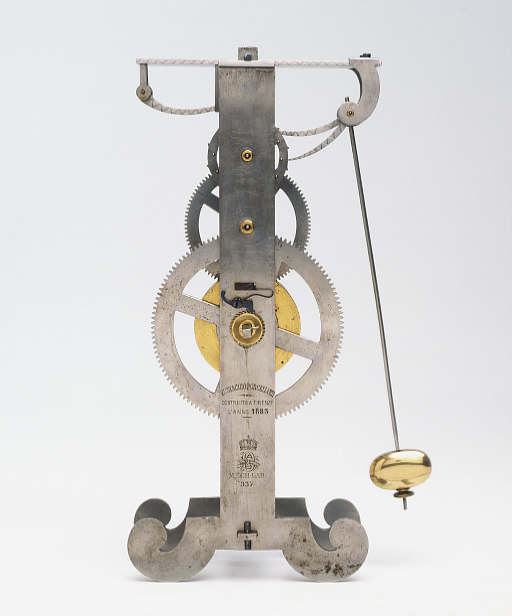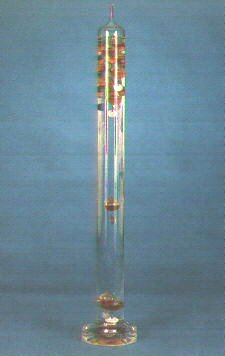Galileo's was a mathematican, physicist, and astronomer. So, he had many different inventions and findings in all three subjects. Law of the Pendulum At age twenty, Galileo noticed a lamp swinging overhead
while he was in a cathedral. Curious to find out how long it took the lamp to
swing back and forth, he used his pulse to time large and small swings. Galileo
discovered something that no one else had ever realized: the period of each
swing was exactly the same. The law of the pendulum, which would eventually be
used to regulate clocks,
made Galileo Galilei instantly famous.Mathematics
To earn a living, Galileo Galilei started tutoring students in mathematics. He did some experimenting with floating objects, developing a balance that could tell him that a piece of, say, gold was 19.3 times heavier than the same volume of water. He also started campaigning for his life's ambition: a position on the mathematics faculty at a major university. Although Galileo was clearly brilliant, he had offended many people in the field, who would choose other candidates for vacancies. The Leaning Tower of Pisa At the time that Galileo arrived at the
University, some debate had started up on one of Aristotle's "laws" of nature,
that heavier objects fell faster than lighter objects. Aristotle's word had been
accepted as gospel truth, and there had been few attempts to actually test
Aristotle's conclusions by actually conducting an experiment!
According to legend, Galileo decided to try. He needed to be able to drop the objects from a great height. The perfect building was right at hand--the Tower of Pisa, 54 meters tall. Galileo climbed up to the top of the building carrying a variety of balls of varying size and weight, and dumped them off of the top. They all landed at the base of the building at the same time Aristotle was wrong. The Telescope
The telescope was introduced to astronomy in 1609 by the great Italian scientist Galileo Galilei, who became the first man to see the craters of the moon, and who went on to discover sunspots, the four large moons of Jupiter, and the rings of Saturn. Galileo's telescope was similar to a pair of opera glasses in that it used an arrangement of glass lenses to magnify objects. This arrangement provided limited magnification--up to 30 times for Galileo--and a narrow field of view; Galileo could see no more than a quarter of the moon's face without repositioning his telescope. This is a letter Galileo wrote to the Doge to try and sell his telescope: "Galileo Galilei, a most humble servant of Your
Serene Highness, being diligently attentive, with all his spirit, not only to
discharging the duties pertaining to the lecturing of mathematics at the
University of Padua, but also to bringing extraordinary benefit to Your Serene
Highness with some useful and remarkable invention, now appear before You with a
new contrivance of glasses, drawn from the most recondite speculations of
perspective, which render visible objects so close to the eye and represent them
so distinctly that those that are distant, for example, nine miles appear as
though they were only one mile distant.
This is a thing of inestimable benefit for all transactions and
undertakings, maritime or terrestrial, allowing us at sea to discover at a much
greater distance than usual the hulls and sails of the enemy, so that for two
hours or more we can detect him before he detects us... -Galileo Galilei The Rudimentary Thermometer
What Galileo needed was to come up with some sort of device that could make him a tidy profit. A rudimentary thermometer (which, for the first time, allowed temperature variations to be measured) and an ingenious device to raise water from aquifers found no market. The Rudimentary Thermometer, thanks to Galileo Galilei. |
  Pendulum Clock, thanks to Galileo Galilei.  Tower of Pisa experiment, thanks to Galileo Galilei.  The great invention of the telescope, which helped the world discover what was beyond, thanks to Galileo Galilei.   |